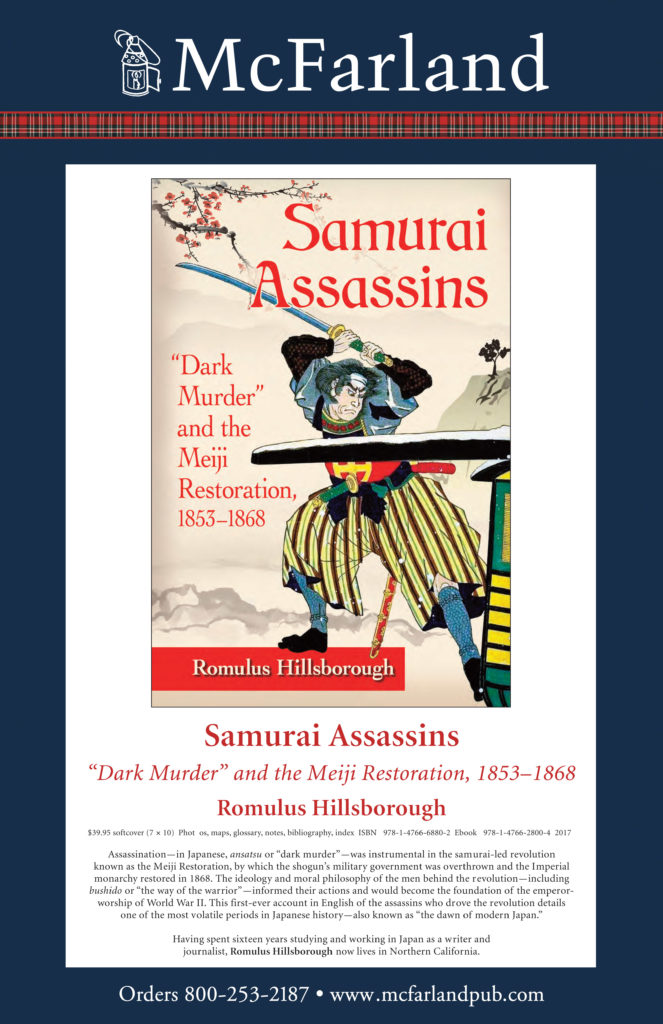
My new book, Samurai Assassins, was published yesterday, March 24, by McFarland as an ebook. The paperback edition should be out before the end of this month. Samurai Assassins, as I have I have described it here, is the only thorough presentation and analysis in English of the most historically significant assassinations of the Meiji Restoration era, “the dawn of modern Japan.” On a deeper level, it is a study of the ideology and psychology behind the “samurai revolution” – which is why it so well complements my previous book Samurai Revolution: The Dawn of Modern Japan Seen Through the Eyes of the Shogun’s Last Samurai (Tuttle 2014).
I have long been intrigued by the personalities and motives of the assassins in the samurai revolution. I began writing Samurai Assassins soon after completing the manuscript of Samurai Revolution around the end of 2011. In previous books I had written about “dark murder” – a translation of the Japanese term for “assassination” – but in much less detail than in Samurai Assassins. Since “dark murder” had thus far received only cursory, if any, attention by non-Japanese writers, notwithstanding its great impact on the Meiji Restoration, and as a result on Japanese, Asian and even world history, I saw the need to write Samurai Assassins.
I finished writing the book around the end of 2014. I felt confidant that Tuttle, which had published three of my books, would jump at the chance to take this one. So I was surprised, and not a little disappointed, when they refused my proposal. But confident that the book was both original and important – not to mention a “good read” – I contacted several other publishers, and finally settled on an excellent one, McFarland, a self-described “leading independent publisher of academic and nonfiction books.” And they have done an excellent job preparing and publishing Samurai Assassins, for which I am most grateful.








 Matsuura Rei (松浦玲) is one of the most important writers of Bakumatsu-Meiji Restoration history. His work on Katsu Kaishu is particularly important. Kaishu is “the shogun’s last samurai” of my book
Matsuura Rei (松浦玲) is one of the most important writers of Bakumatsu-Meiji Restoration history. His work on Katsu Kaishu is particularly important. Kaishu is “the shogun’s last samurai” of my book